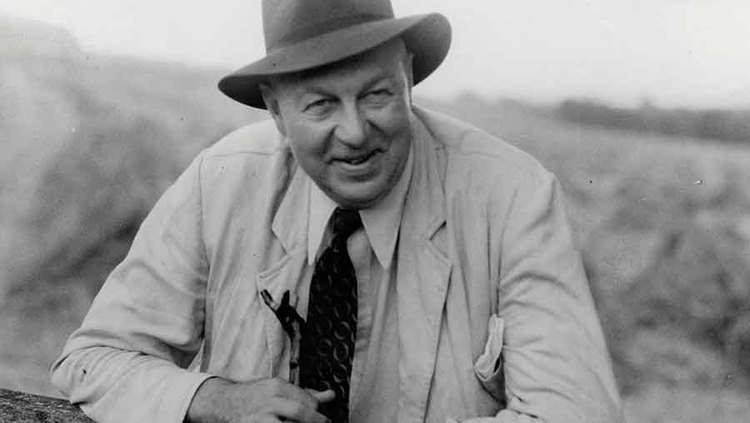Name A. Street Children Pamela Street | Died July 21, 1966 Role Writer | |
 | ||
Siblings Fanny Street, Dorothea Street Books Farmer's glory, The endless furrow, A crook in the furrow, The gentleman of the party, Strawberry Roan | ||
Arthur George Street (7 April 1892 – 21 July 1966), who wrote under the name of A. G. Street, was an English farmer, writer and broadcaster. His books were published by the literary publishing house of Faber and Faber. His best-known book was Farmer's Glory, describing his time in Canada and how he returned to Wiltshire.
Contents
Life and work
The son of a Wiltshire tenant farmer, Street was born at Ditchampton Farm, Wilton, Wiltshire, near Salisbury, where he eventually took over the tenancy. He was educated at Dauntsey's School, where agriculture was part of the curriculum, and left school in 1907 at the age of sixteen. He then spent some years learning farming from his father. He later wrote that:
I did not do much actual laborious work, but my father made me do every job on the farm at some time or another in order that I might, from personal knowledge, be able to estimate whether a man was working well or ill at any particular job. I was much older before I realised how much I did learn in those first years after leaving school.
Next, Street spent some years working on a farm in Canada, arriving in Winnipeg in 1910. There he learnt a more expansive form of agriculture than he knew at home.
First of all a working farmer, Street began to try his hand at writing as a way to supplement his farm income when it was severely reduced by prices falling during the great agricultural depression of the 1920s and 1930s. He continued to farm after he became a popular author. He portrayed farm life in the south of England without idealizing it, and his use of dialect strengthens his imagery of rural life. His books were mainly light fiction, often based on the Wiltshire farming community and to some degree autobiographical. His book Strawberry Roan was turned into a film. A critical work of 2006 brackets him with George Sturt, Adrian Bell, Henry Williamson, W. H. Hudson, H. J. Massingham, H. V. Morton, Constance Holme and Mary Webb.
He wrote a weekly column for Farmers Weekly for thirty years. He was also a prolific radio broadcaster, appearing on The Brains Trust and many other BBC radio programmes, and a member of the Empire Poetry League.
During the Second World War, he was a member of the Home Guard, on one occasion joining the chase for a missing German parachutist.
Street is himself the subject of a radio programme by the poet Sean Street.
Family
Street's sister Dorothea Street was also an author, her children's book The Dog-Leg Garden being published in 1951. His sister Fanny Street founded Hillcroft College.
His daughter Pamela Street was an author and poet and wrote a biography of Street, My Father A. G. Street (1969).
Books
Street's books include the following, with year of publication:
Other work
Street also wrote many newspaper and magazine articles and contributed to travel and other books, including:
